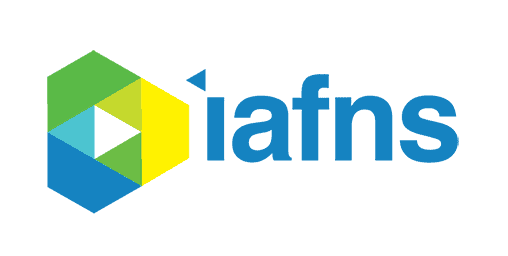Indianapolis, Indiana, USA
August 3, 2014 – August 6, 2014
The following are details for sessions sponsored by IAFNS at IAFP 2014.
1.The Rise of the Genomes – How Whole Genome Sequencing Will Transform Food Safety
Monday, 4 August 2014
8:30 AM to 12:00 PM
Room: Wabash 2-3
Agenda
- Whole genome sequencing- the basics — Kendra Nightingale | Video
- Bioinformatic analysis of whole genome sequencing data and its application in the food industry — Bruno Sobral, Nestle | Video
- The Global Microbial Identifier initiative — Jorgen Schlundt, The Danish Food Institute | Video
- Public health experience and initiatives with whole genome sequencing — Peter Gerner-Smidt, CDC | Video
- Food regulatory agency use and vision for the use of whole genome sequencing — Eric Brown, FDA/CFSAN | Video
- Roundtable — Moderator Kendra Nightingale, Texas Tech University
This session was sponsored by the IAFNS Technical Committee on Food Microbiology.
2. Parasites in the Food Supply Chain: Emergence or Re-Emergence?
Monday, 4 August 2014
3:30 PM to 5:00 PM
Room: 116-117
Agenda
- Food-borne parasites — Y.R. Ortega, University of Georgia, Center for Food Safety | Video
- Technologies for the prevention, detection and inactivation of parasites in foods — Palmer Orlandi, FDA/CFSAN | Video
- Parasitic outbreak trends: are they becoming more of an issue? — Rebecca Hall, CDC | Video
This session was sponsored by the IAFNS Technical Committee on Food Microbiology.
3. Current Perspectives in Food Safety Roundtable
Tuesday, 5 August 2014
8:30 AM to 10:00 AM
Room: Wabash 1
Agenda
- Risk of illness from raw sprout consumption cannot be adequately controlled | Video
- Pro: Michelle Smith, FDA
- Con: Robert Tauxe, CDC
- Effective HACCP programs should negate the need for routine finished product testing yet customer requests for such testing are increasing | Video
- Pro: Tim Freier, Cargill, Incorporated
- Con: Tim Jackson, Nestlé USA, Inc.
- Recalls are not an effective tool in the food safety tool box | Video
- Pro: Robert Brackett, Institute for Food Safety and Health, Illinois Institute of Technology
- Con: Barbara Kowalcyk, Center for Foodborne Illness Research & Prevention
This session was sponsored by the IAFNS Technical Committee on Food Microbiology.
4. Threshold of Toxicological Concern (TTC) — A Pragmatic Approach to Determine the Risk of a Chemical Substance of Unknown Toxicity
Wednesday, 6 August 2014
1:30 PM to 3:30 PM
Room: 116-117
Agenda
- Introduction to threshold of toxicological concern (TTC) — Dr. Mitch Cheeseman, Steptoe & Johnson LLP | Video
- Application & growth of the use of TTC in the flavor industry — Dr. Sean Taylor, FEMA | Video
- Determining the applicability of TTC approaches to chemical substances found in foods — Dr. Richard Canady, ILSI Research Foundation | Video
- Regulatory overview: what’s next for TTC? — Dr. Penelope Rice, FDA CFSAN | Video
This session was sponsored by the IAFNS Technical Committee on Food & Chemical Safety.
5. 21st Century Chemical Food Safety Assessment Challenges
Wednesday, August 6, 2014
8:30 AM-10:00 AM
Wabash 1
While this session was not sponsored by IAFNS, work done by the 2012 Food and Chemical Safety Summer Fellow was presented.
IAFNS-Sponsored Work Presented in Posters
1. Elena Enache, Grocery Manufacturers Association
Monday, 4 August 2014
“Dry Talc Inoculum Preparation Procedure with Salmonella and the Surrogate (Enterococcus faecium) for Challenge Studies in Low-moisture Foods” | Video
2. Monica Ponder, Virginia Tech
Monday, August 4 2014
“Effect of Inoculation Method on the Survival of Salmonella Tennessee on Whole Black Peppercorns” | Video
3. Elena Enache, Grocery Manufacturers Association
Monday, 4 August 2014
“Thermal Resistance of Salmonella Tennessee, Salmonella Typhimurium DT104 and Enterococcus faecium in Peanut Paste Formulations at Two Levels of Water Activity (0.3 and 0.6) and Fat Concentrations (47 and 56%) at 75°C”
4. Sanghyup Jeong, Michigan State University
Tuesday, 5 August 2014
“Minimizing Salmonella Attachment to Dry Surfaces through Use of High-frequency Mechanical Vibration” | Video
More information about IAFP 2014 can be found here.
